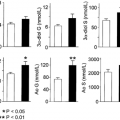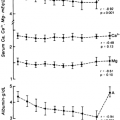CONCEPTION, IMPLANTATION, AND EARLY DEVELOPMENT
Philip M. Iannaccone
David O. Walterhouse
Kristina C. Pfendler
The hormonal milieu plays an essential role in the production of parental germ cells, the biology of the reproductive process, and the subsequent creation, development, and survival of the offspring. To understand fully the impact of hormones on the adult, the child, the newborn, and the as-yet-unborn, the endocrinologist
must be aware of the processes of conception, implantation, and early fetal development.
must be aware of the processes of conception, implantation, and early fetal development.
Human loss through fetal wastage is significant. There are ˜600,000 clinically apparent spontaneous abortions per year in the United States, and the 3 million live births probably represent 10 million conceptions.1 Fetal loss can occur at any of the major steps in development. The probability of pregnancy in any given menstrual cycle under optimal conditions is ˜30%.2,3 and 4 The probability of successful fertilization may be as high as 85%, but 25% to 35% of conceptuses do not implant, and as many as 30% fail shortly after implantation. Undoubtedly, this loss represents a reproductive strategy. The rate-limiting feature of reproduction in mammals is the childbearing period. Therefore, if there is a possibility of loss of the individual during or immediately after the pregnancy, it is in the best interests of the species to eliminate the pregnancy as soon as possible and to make the mother available for another pregnancy. Thus, several critical steps of increasing sophistication of cellular coordination are required for the conceptus to enter midgestation and the organogenesis phase of development.
Stay updated, free articles. Join our Telegram channel

Full access? Get Clinical Tree





